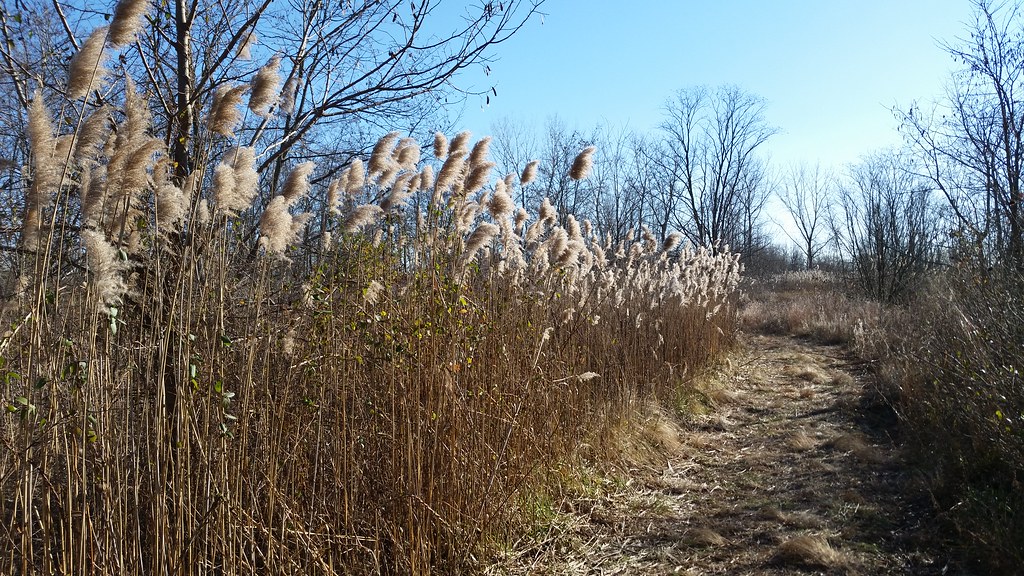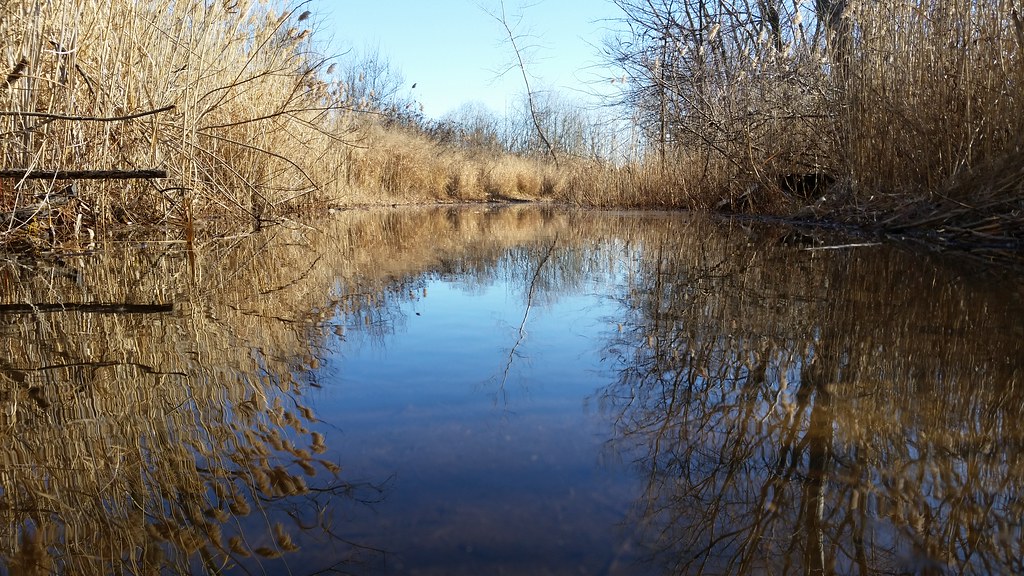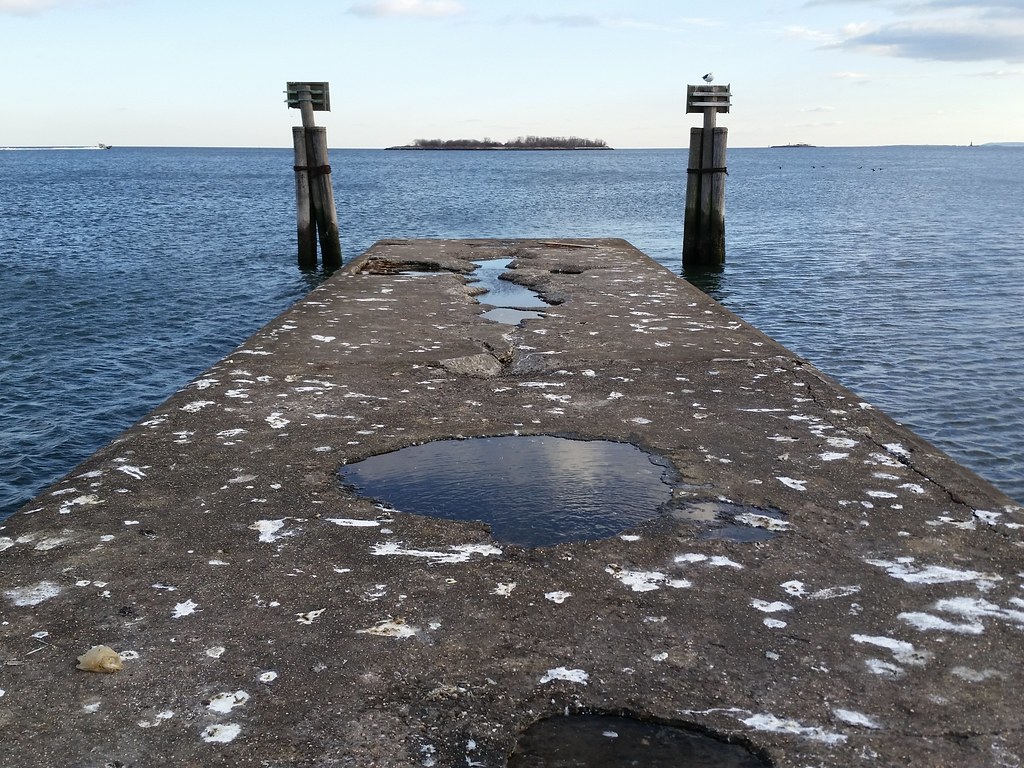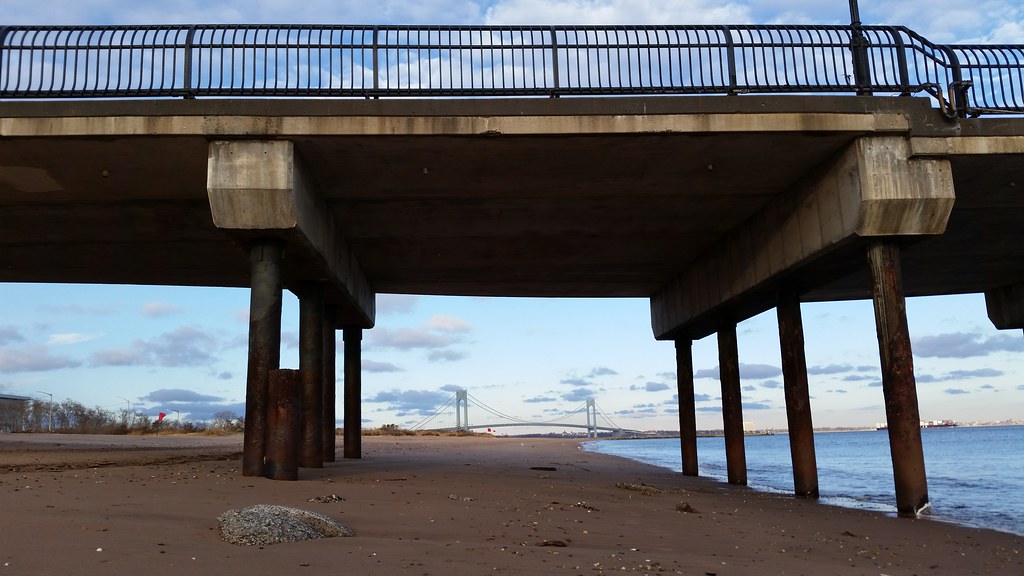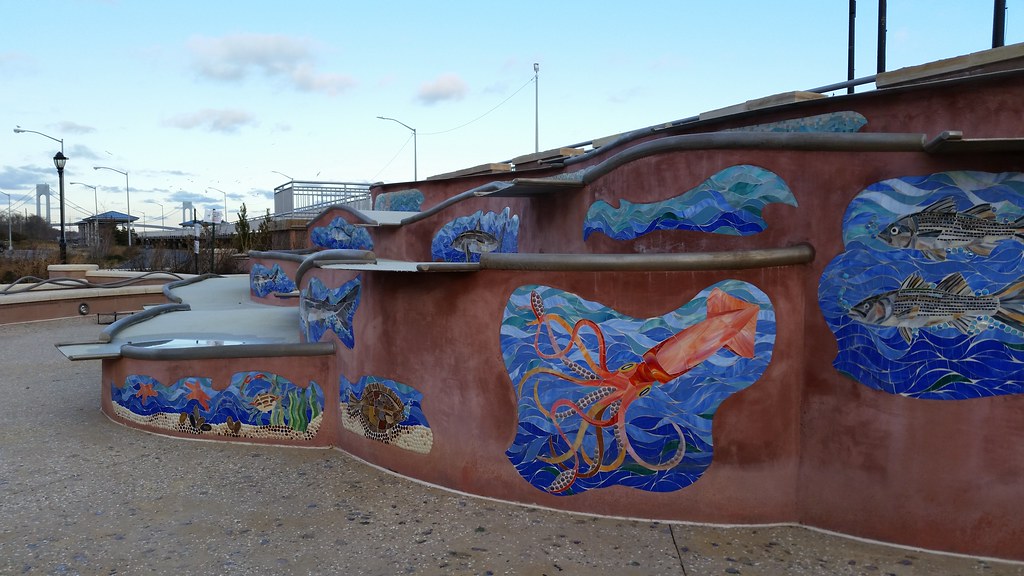
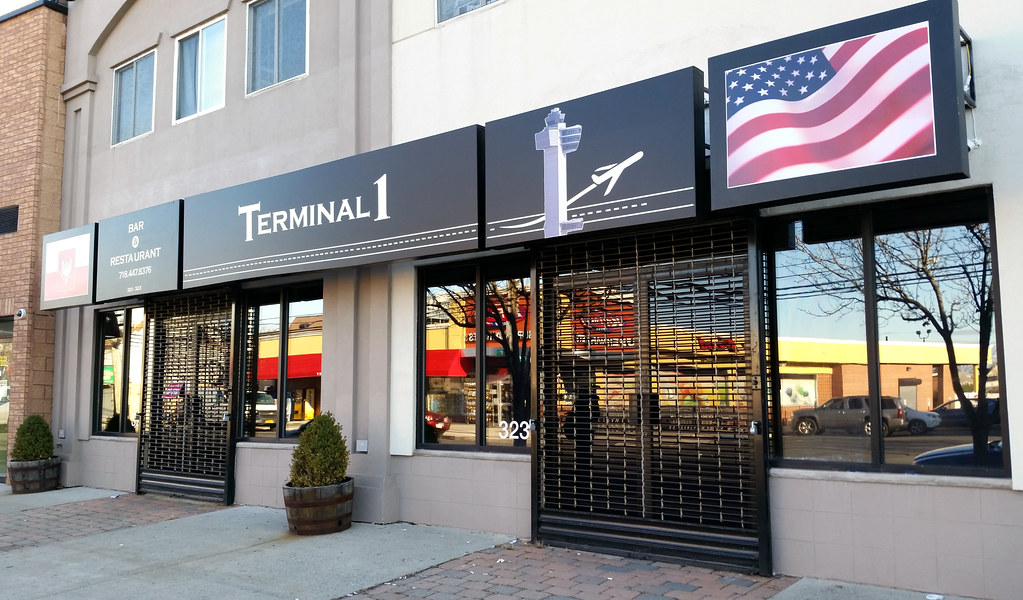
This is apparently Staten Island's only Polish restaurant.
That's JFK Airport's air traffic control tower depicted on the sign. JFK is more than 20 miles away by car, so I was surprised to see a restaurant here named after one of its terminals. But it turns out that LOT, Poland's national airline, operates out of JFK's Terminal 1, so I'd imagine that's where the name came from. (O'Hare in Chicago is LOT's only other US destination.)
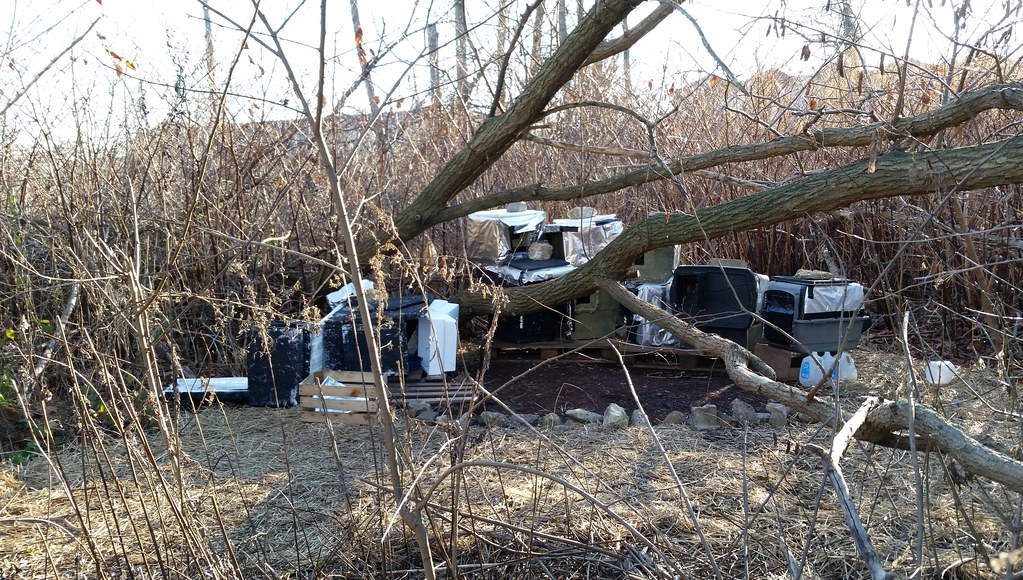
At the dead end of Quincy Avenue, I followed a little trace of a trail a few hundred feet into the woods, and this is where it led me.
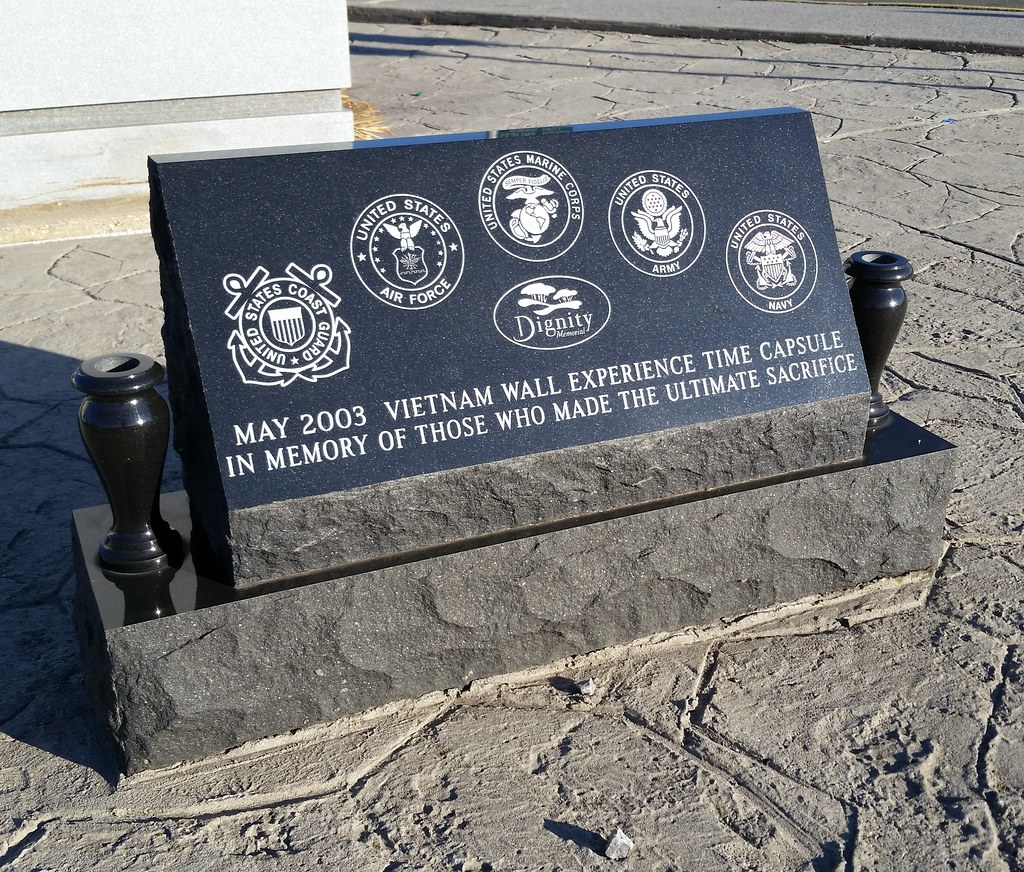
The Vietnam Wall Experience (a.k.a. the Dignity Memorial Vietnam Wall) is a traveling three-quarter-scale model of the Vietnam Veterans Memorial in Washington, D.C. It's currently "temporarily retired" at Fort Benning, Georgia, but prior to that it was exhibited all over the country. It came to Staten Island in May 2003, and it seems that a time capsule was left here to commemorate its visit. I'm not sure what the capsule contains, but perhaps, like a capsule that was buried in Tucson after the wall visited in 2005, it's filled with "memorabilia that was left at the wall".
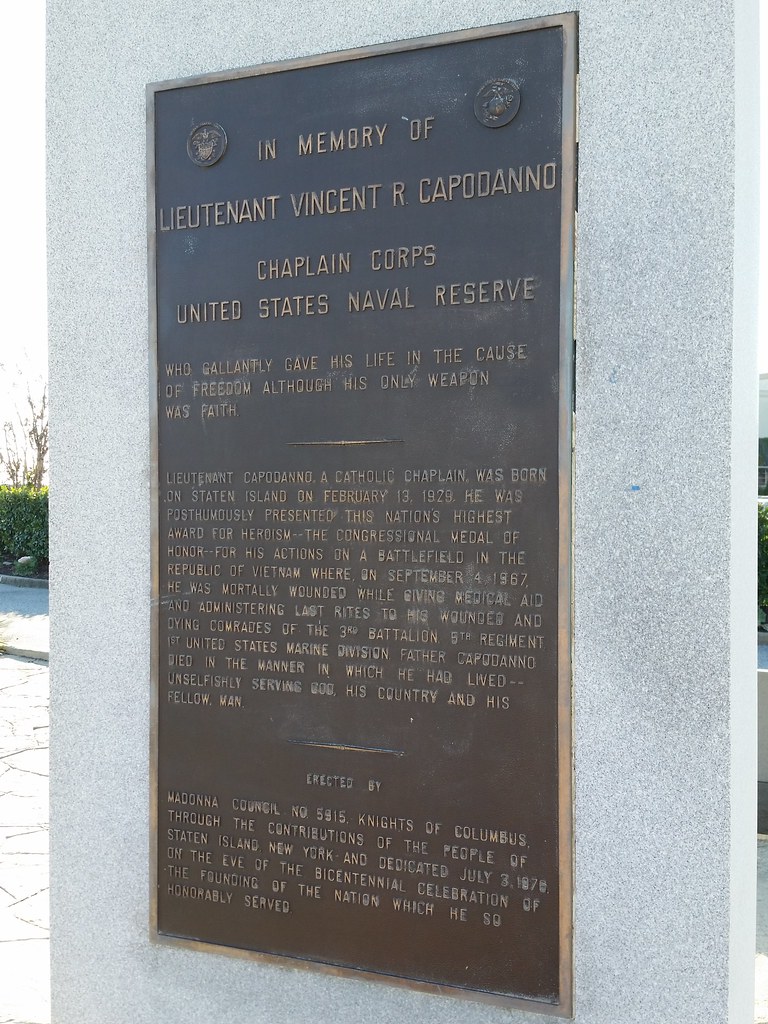
This memorial honoring Father Capodanno stands next to the Vietnam Wall Experience time capsule on Father Capodanno Boulevard. Father Cap was posthumously awarded the Medal of Honor for
conspicuous gallantry and intrepidity at the risk of his life above and beyond the call of duty as Chaplain of the 3d Battalion, in connection with operations against enemy forces. In response to reports that the 2d Platoon of M Company was in danger of being overrun by a massed enemy assaulting force, Lt. Capodanno left the relative safety of the company command post and ran through an open area raked with fire, directly to the beleaguered platoon. Disregarding the intense enemy small-arms, automatic-weapons, and mortar fire, he moved about the battlefield administering last rites to the dying and giving medical aid to the wounded. When an exploding mortar round inflicted painful multiple wounds to his arms and legs, and severed a portion of his right hand, he steadfastly refused all medical aid. Instead, he directed the corpsmen to help their wounded comrades and, with calm vigor, continued to move about the battlefield as he provided encouragement by voice and example to the valiant marines. Upon encountering a wounded corpsman in the direct line of fire of an enemy machine gunner positioned approximately 15 yards away, Lt. Capodanno rushed a daring attempt to aid and assist the mortally wounded corpsman. At that instant, only inches from his goal, he was struck down by a burst of machine gun fire. By his heroic conduct on the battlefield, and his inspiring example, Lt. Capodanno upheld the finest traditions of the U.S. Naval Service. He gallantly gave his life in the cause of freedom.
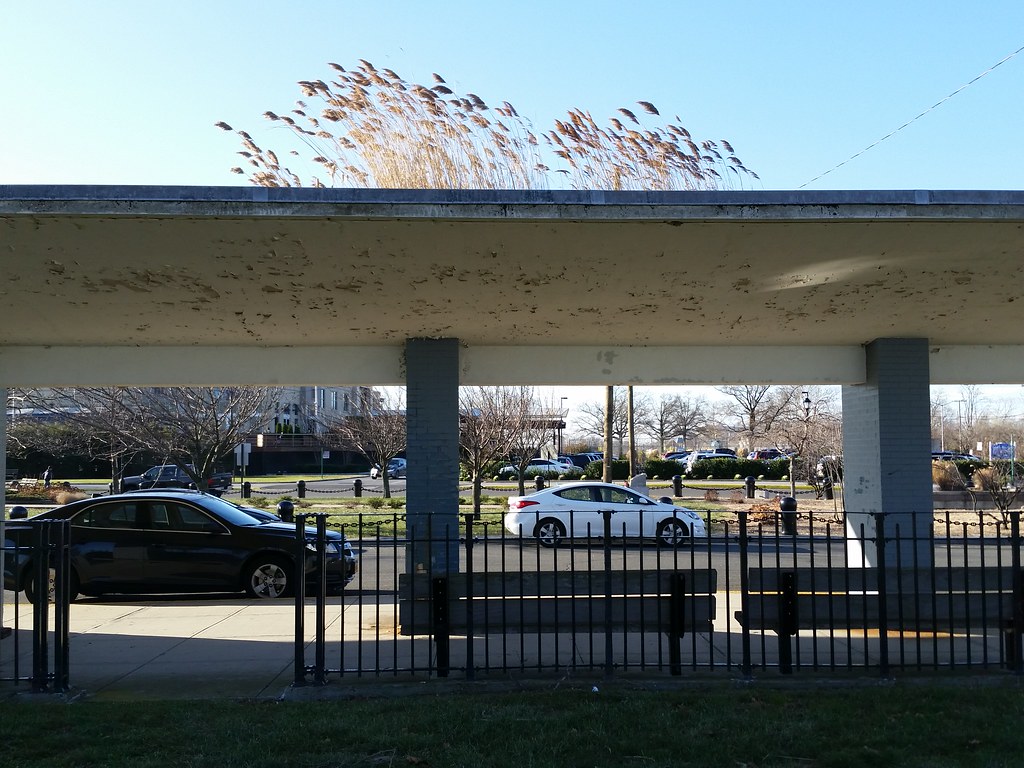
Looks like this middle section of the roof has long been collecting water — and presumably some windblown organic matter as well. Perhaps the phragmites seeds were also blown in on the wind, or maybe they were carried here by birds looking to take a nice bath in the accumulated roof water.
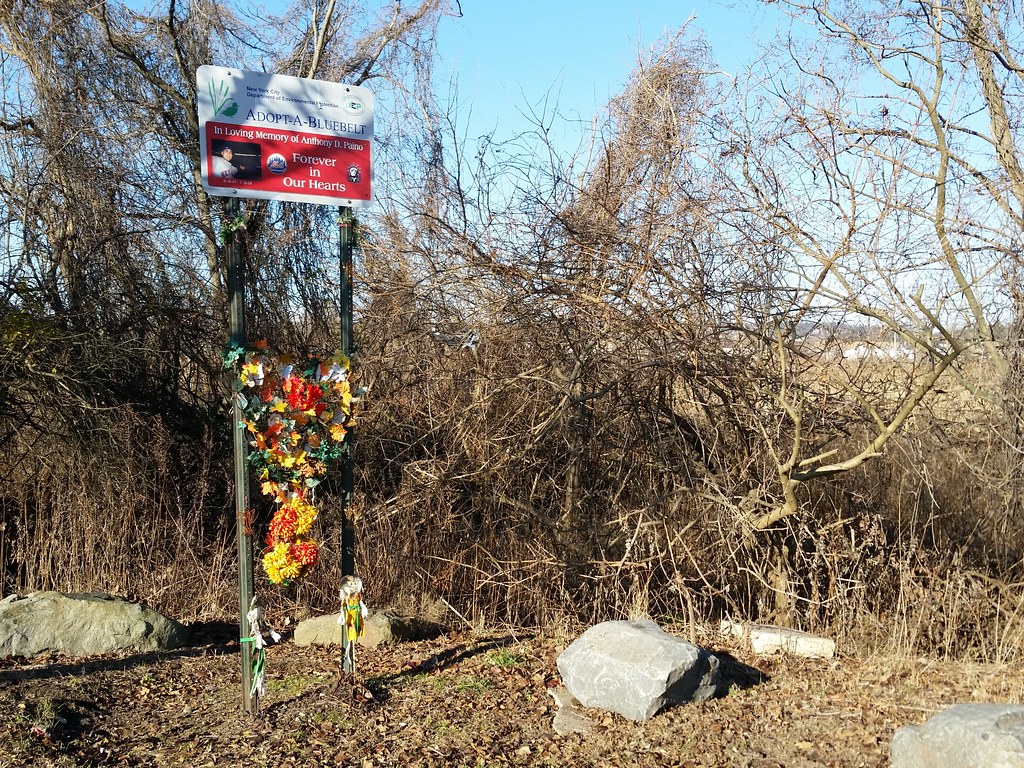
In Loving Memory of Anthony D. Paino
What's a Bluebelt?
The Staten Island Bluebelt is an award winning, ecologically sound and cost-effective stormwater management for approximately one third of Staten Island’s land area. The program preserves natural drainage corridors, called Bluebelts, including streams, ponds, and other wetland areas. Preservation of these wetland systems allows them to perform their functions of conveying, storing, and filtering stormwater. In addition, the Bluebelts provide important community open spaces and diverse wildlife habitats. The Bluebelt program saves tens of millions of dollars in infrastructure costs when compared to providing conventional storm sewers for the same land area. This program demonstrates how wetland preservation can be economically prudent and environmentally responsible.The Adopt-A-Bluebelt program "offers local community groups, companies and individuals an opportunity to enhance Staten Island's open spaces by acting as Sponsors who adopt parts of the Bluebelt." Many sections of Bluebelt have been adopted by families in honor of lost loved ones, and since much Bluebelt land is swampy and inaccessible, the roadside Adopt-A-Bluebelt memorials, while having nothing to do with stormwater management, are often the Bluebelts' most publicly visible features.

This appears to be another roadside memorial, presumably for a child. Up above the bear on the pole are a cross and a package of toy cars, as well as a bar code label that reads "BLUE BEAR" (close-up).
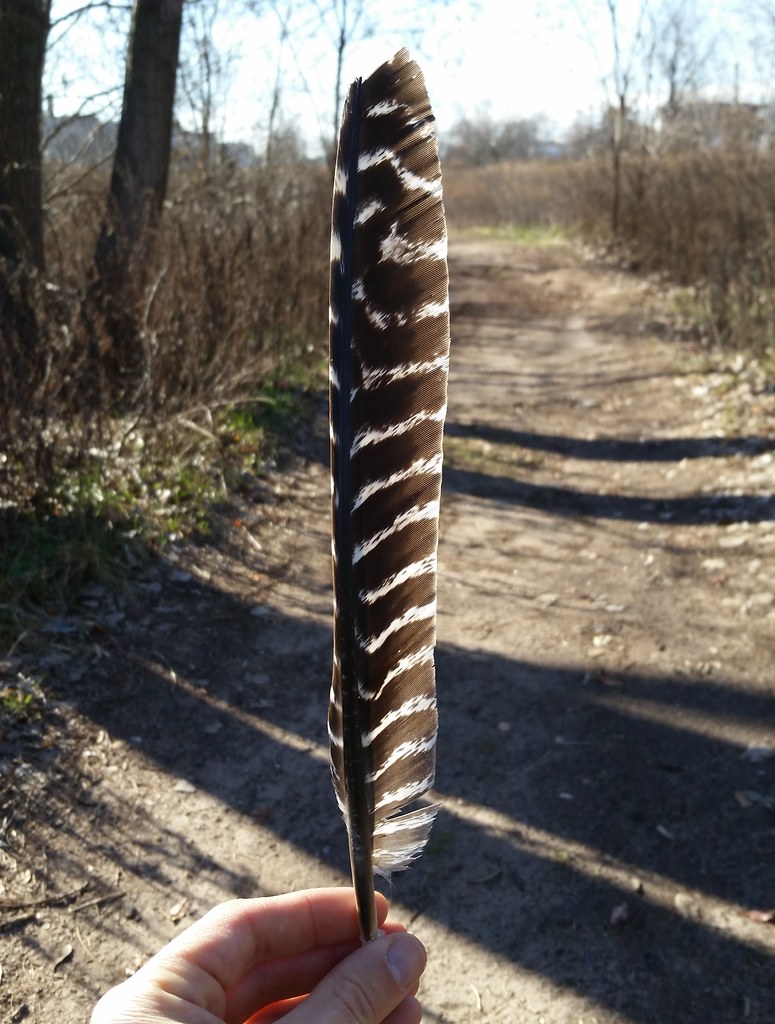
Adjacent to the South Beach Psychiatric Center, Ocean Breeze Park is well within the range of the Staten Island turkeys. (I took this photo right at the edge of the park the other day.) I also saw numerous turkey tracks on the park's dirt paths today.

On July 21, 2010, the day ground was broken on this massive, 135,000-square-foot track and field facility in Ocean Breeze Park that has ended up costing $93 million, the city put out a press release saying "the $70 million . . . Ocean Breeze Track and Field Complex is anticipated to complete its construction by the end of 2012." Whoops. But it will open one of these days, really! (Also, "is anticipated to complete its construction" is a bizarre phrase that almost seems like it was presciently designed to hold no one but the facility itself accountable when construction inevitably dragged on longer than "anticipated".)
Fun fact: There was a period of time during the fall of 2012 when the building's acoustic baffling panels hadn't yet been enclosed inside the structure and were driving neighbors crazy with the loud, strange sounds they made in certain wind conditions: "high celestial harmonies . . . like [a] battalion of crickets armed with sopranino recorders . . . like 100,000 people with unlimited air in their lungs blowing through Coke bottles".
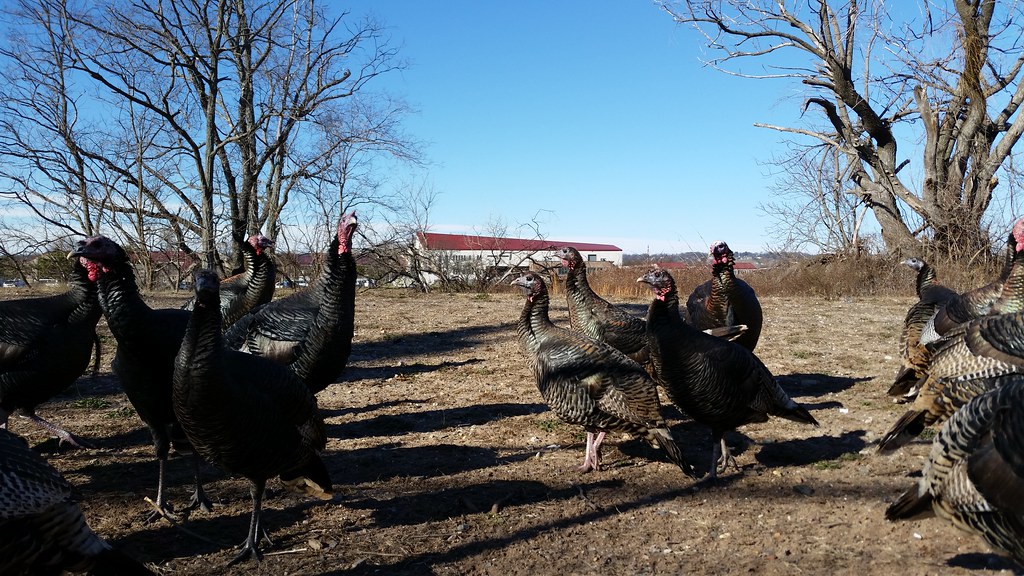
at the South Beach Psychiatric Center. When I was looking up what a group of turkeys is called, I discovered some great names, many archaic or obsolete, for groups of other types of birds as well, including:
- A bouquet of pheasants
- A charm of finches
- A deceit of lapwings
- A descent of woodpeckers
- An exaltation of larks
- A murmuration of starlings
- A murder of crows
- An ostentation of peacocks
- A parliament of owls
- A siege of herons
- An unkindness of ravens
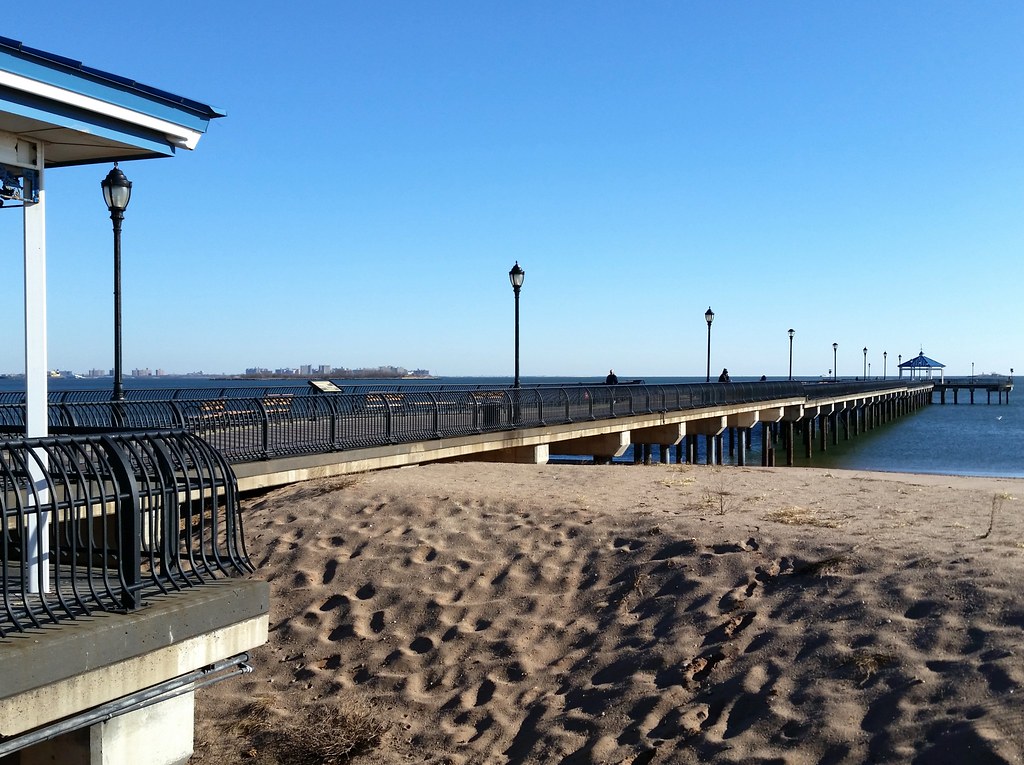
This recreational pier, "outfitted with fishing rod holders, bait cleaning tables and customized fish cleaning stations", opened in 2003.
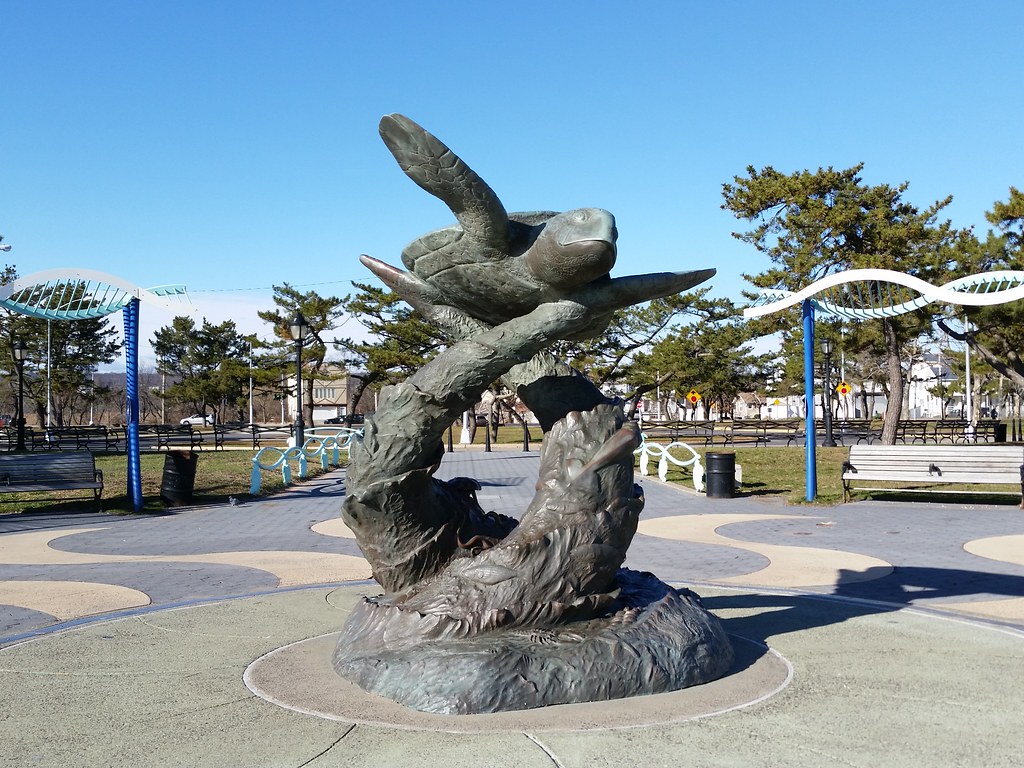
The centerpiece of the Midland Beach entrance plaza, this sculpture is teeming with marine life. If you look closely, you can find "striped bass, fluke, flounder, lobsters, crabs, sea stars, and mud snails", not to mention a squid and an octopus. (And speaking of life, you can see the double-helix structure of DNA evoked by the wavy bench canopies and pathway railings behind the sculpture.) Not surprisingly, work began on this animal extravaganza during Henry Stern's tenure as parks commissioner.

The signs outside the Little House in the Gully, which had been pushing for a state buyout of the Bowl (this low-lying section of Ocean Breeze that was hammered by Hurricane Sandy), have been updated to express gratitude for the state's buyout offer. You can see two more of the new signs here.
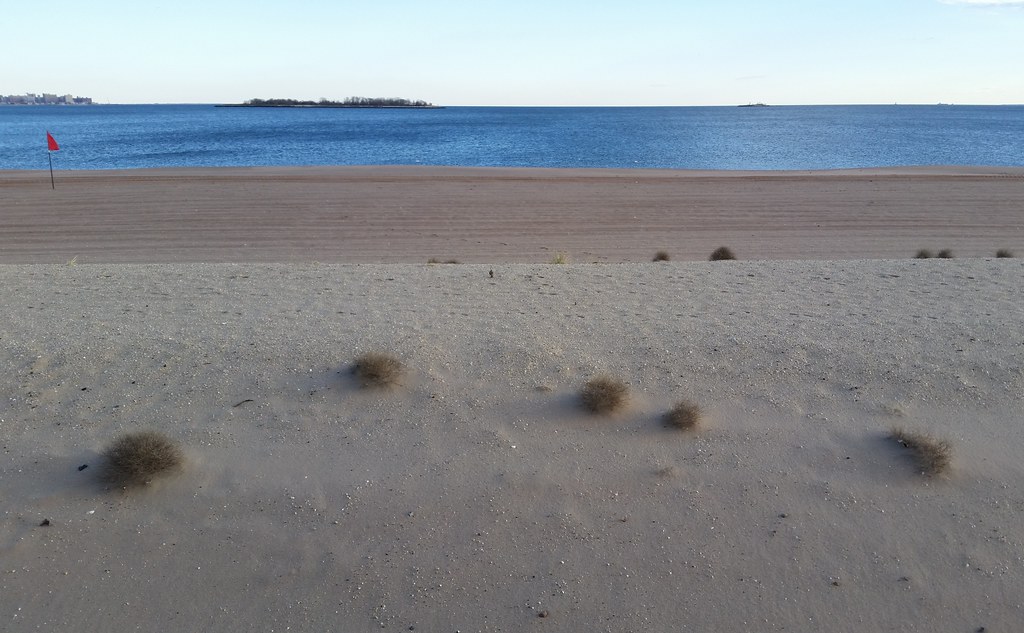
The treed island at left is Hoffman Island and the smaller (and more distant) one at right, which you might need to zoom in to see, is Swinburne Island. (The built-up land at far left is part of Coney Island.)
Construction on these two artificial islands began in the mid-1860s. They were built to serve as quarantines after two previous such facilities on Staten Island were burned down by angry neighbors. Isolated from the rest of the city, the islands proved to be more palatable locations for detaining the sick.
The Swinburne quarantine closed in 1928 and the island has been abandoned ever since, except for a stint as a control center for underwater mines during World War II. Starting in 1931, Hoffman Island saw a few different uses: it was home to a parrot quarantine, a picnic ground, and a merchant marine training school before being abandoned in 1947. The islands have been part of Gateway National Recreation Area since 1972, although they are off limits to the public.


